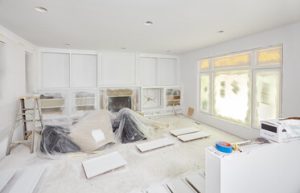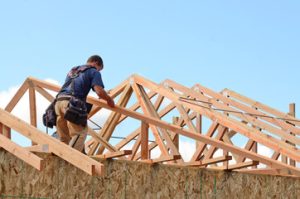Rubbish removal and demolition often seem like separate tasks at first glance. One focuses on clearing debris while the other brings down structures. Yet their connection goes deeper than simple sequence. Together they shape how spaces transform from cluttered to clear.

Demolition begins by deconstructing what once stood strong and permanent. Every wall, roof, and floor becomes a potential obstacle for progress. The process requires strategy to dismantle without causing danger. This careful planning lays the groundwork for safe removal afterward. Visit Website to learn more.
Rubbish removal steps in as the silent partner once destruction is done. It handles the aftermath of splintered wood, twisted metal, and crumbled stone. Clearing the site demands speed and precision to avoid hazards. It turns chaotic rubble into manageable materials.
Both processes rely on timing to work in harmony. Delayed removal can stall demolition progress and create safety risks. Swift clearing keeps the area open for equipment to maneuver. This rhythm keeps projects on track and budgets under control.
The synergy between these tasks goes beyond logistics. Removing debris early exposes structural elements for inspection. Hidden faults become visible when rubble no longer hides them. This prevents costly surprises during rebuilding.
Efficient coordination also reduces environmental stress. Piling waste can pollute air and soil while awaiting disposal. Quick removal limits exposure and lowers contamination risks. It shows how demolition and cleanliness protect nature together.
Rubbish removal teams often sort materials during collection. Salvaging reusable elements lessens the amount that goes to landfills. Demolition thus becomes a source of raw materials for new creations. This circular approach supports sustainable construction cycles.
Dust control becomes easier when rubbish removal keeps up. Loose particles stay trapped when debris doesn’t sit for long. This keeps air clearer for nearby workers and residents. It transforms what could be a health hazard into a controlled environment.
Demolition often reveals forgotten materials buried in older structures. These might include outdated wiring, rusted pipes, or fragile glass. Rubbish removal ensures these are handled safely and responsibly. It shields workers from hidden dangers inside wreckage.
The sequence also shapes how spaces are emotionally perceived. Demolition can feel violent or unsettling without immediate cleanup. Quick removal softens this impression by restoring visual order. It turns destruction into the first stage of renewal.
Noise management benefits from their coordination too. Continuous removal prevents loud piles from needing heavy equipment later. Smaller frequent loads create less disruption than massive hauls. This helps projects stay neighbor-friendly despite their intensity.
Fire safety becomes another shared responsibility between the two. Rubble piles can trap heat or flammable material if left untouched. Timely clearing removes ignition sources before they spark. This reduces the risk of accidents during ongoing demolition.
Rubbish removal also creates access pathways as demolition unfolds. Open routes let machines and crews move without obstruction. This minimizes delays from blocked areas or tangled materials. It keeps every stage flowing like clockwork.
The psychological impact on workers should not be overlooked. Clean sites boost morale and focus during demanding demolitions. Clutter breeds stress while order inspires productivity. This subtle effect enhances team performance.
Water drainage improves as debris disappears quickly. Blocked gutters or drains can flood a site if rubbish lingers. Removal maintains natural water flow even mid-demolition. It prevents erosion and structural undermining beneath the surface.
Material tracking is more accurate with steady clearing. Each removed load can be documented for weight, type, and condition. This builds a transparent record of site activity. It keeps stakeholders informed and compliant with regulations.
Space optimization relies on rubbish removal as well. Demolition zones shrink as cleared sections reopen for use. Crews can stage equipment or materials in these cleared pockets. This makes limited spaces feel larger and more manageable.
Safety training often blends both fields together. Workers learn how to dismantle while planning how to remove safely. This dual perspective reduces errors that come from separating the tasks. It builds a more versatile and responsive team.
Community perception benefits from this combined approach. Clean progress signals professionalism and respect for surroundings. Neat sites reduce complaints and build public trust. It frames demolition as thoughtful rather than destructive.
Lighting improves as clutter leaves the site. Shadows caused by tall piles can hide hazards from view. Clear spaces allow illumination to spread evenly. This reduces tripping accidents and boosts overall visibility.
Rubbish removal also allows selective demolition to succeed. Targeting only certain areas requires constant clearing nearby. Keeping the surroundings clean avoids accidental damage from falling debris. It protects structures that are meant to remain.
Waste transport logistics tie directly into demolition planning. Coordinated schedules prevent bottlenecks of trucks or containers. Smooth flow of outgoing waste matches the pace of dismantling. This synchronization saves time and fuel.
Air quality remains higher when rubbish removal is prompt. Old insulation or dust-heavy materials release particles easily. Removing them early stops prolonged exposure. It keeps workers healthier throughout the project.
The speed of site turnover depends heavily on this partnership. A fully demolished structure means nothing if debris lingers. Rapid removal clears the canvas for what comes next. It compresses downtime between demolition and rebuilding.
Tool maintenance benefits indirectly from tidy spaces. Less debris underfoot reduces wear on machinery and vehicles. Clean work zones mean fewer punctures, jams, or overheating. This prolongs equipment life while lowering repair costs.
Rubbish removal also controls the spread of pests during demolition. Piles of scraps can attract rodents or insects quickly. Regular clearing cuts off their shelter and food sources. This keeps infestations from starting.
Structural recycling thrives on precise rubbish sorting. Metals, wood, and concrete can be separated as they come out. This reduces contamination and raises material value. It transforms waste into a future resource.
Weather challenges highlight their interdependence. Sudden storms can scatter loose rubble if it sits exposed. Clearing it quickly prevents damage or loss. This keeps projects stable despite changing skies.
Legal compliance often demands proof of clean demolition practices. Documented rubbish removal supports permit renewals and audits. It shows care for safety and environmental responsibility. This strengthens trust with regulators.
Even sound design can benefit from this dynamic duo. Removing debris reveals acoustics that may affect future structures. Clear spaces let designers hear how sound travels onsite. This subtle detail shapes how buildings are planned.
Rubbish removal also enables the artistic side of demolition. When sites are cleared as they collapse, the transformation feels deliberate. Viewers can watch the space evolve rather than dissolve. It turns a rough process into a visible rebirth.
Energy efficiency improves when rubble is removed promptly. Machines run smoother without pushing through clutter. Workers spend less effort navigating hazards. This reduces overall energy consumption during the project.
The flow of information depends on clear sites as well. Surveyors and planners can measure accurately without obstruction. Clean foundations allow precise analysis. This ensures the next phase rests on correct data.
Even the emotional tone of a site shifts with rubbish removal. Piles of debris symbolize endings while cleared spaces suggest beginnings. Workers respond to this shift with renewed energy. It keeps morale high through exhausting work.
Ultimately, demolition and rubbish removal thrive as a synchronized dance. One breaks down what once stood while the other clears the way forward. Their balance creates order from destruction. This synergy transforms chaos into opportunity.

